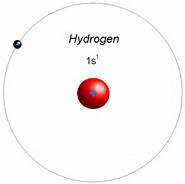Linde Starts Small-Series Production for Hydrogen Fuelling Stations
 |
Linde starts small-series production for hydrogen fuelling stations
- World's first series production of its kind
- Standard agreement closed with Iwatani Corporation (Japan) for delivery of 28 units
- Technology leadership through innovative ionic compressor
- Leading companies from industry are committed to hydrogen
MUNICH & VIENNA -- July 14, 2014: Technology company The Linde Group continues to advance the introduction of hydrogen as a fuel: Today the company officially opened the world's first small-series production facility for hydrogen fuelling stations in Vienna. Many prominent and international guests attended the event, including the Austrian Minister of Transport, Innovation and Technology, Doris Bures, and the German Ambassador to Vienna, Detlev Rünger. Linde's Vienna Application Centre was extensively modernised and expanded specifically for this project. Many ground-breaking hydrogen fuelling innovations have originated from this research and development hub in Vienna in recent years. These include Linde's energy-efficient, compact ionic compressor, the IC 90.
“The development of small-series production capabilities is a key milestone on this journey. It gives us the flexibility we need to meet rising demand in different markets. Our standard agreement with Iwatani shows that we are on the right path along with our partners.”
"The successful commercialisation of fuel-cell cars hinges on a sufficiently widespread hydrogen infrastructure," explains Professor Dr Aldo Belloni, member of the Executive Board of Linde AG. "The development of small-series production capabilities is a key milestone on this journey. It gives us the flexibility we need to meet rising demand in different markets. Our standard agreement with Iwatani shows that we are on the right path along with our partners."
At the opening ceremony, Linde and Iwatani Corporation announced that both companies had closed a deal for the delivery of 28 hydrogen fuelling stations with ionic compressors. The first of these units went on stream today in Amagasaki near Osaka, Japan. Akiji Makino, CEO of Iwatani Corporation, comments: "Iwatani would like to contribute to the development of Japan's hydrogen energy infrastructure by building on highly advanced ionic compressor technology from Linde."
The Austrian Minister Bures had the following to say: "I am proud to see that Austrian engineering is making a valuable contribution to the advancement of hydrogen technology. This new opening is an important development on several counts. Not only is it the first small-series production facility of its kind worldwide, it also exemplifies how research and technology development work can feed directly into production and the creation of new jobs. In a nutshell, it pays to invest in the future."
Dr Gerhard Roiss, Chairman of the Executive Board and CEO of OMV AG, is equally enthusiastic: "In order to effectively transition to cleaner sources of energy, we now need second-generation renewable innovations, and not first-generation subsidies. And this is exactly what OMV is focusing on. The success of tomorrow's mobility solutions hinges on close cross-industry collaboration. And this project is a prime example of how this can work. This first series production facility for hydrogen fuelling stations marks an important milestone on our way towards the widespread use of hydrogen-powered vehicles."
Unlike conventional piston-operated compressors, Linde's IC 90 works with liquid salts. Because these ionic liquids do not have a vapour pressure, they do not evaporate or mix with the hydrogen gas. They also eliminate mechanical wear-and-tear and sealing problems inside the cylinders. In addition, the IC 90 increases energy efficiency. Equipped with a sophisticated safety system and remote diagnosis and maintenance capabilities, the IC 90 meets all fuelling standards to ensure safe, silent fuelling and can achieve a pressure of 1,000 bar (14,500 psi) if required. With this compressor, technology leader Linde has made a valuable and key contribution to the ongoing enhancement of today's hydrogen fuelling infrastructure.
Highlights of the new small-series production concept include a high degree of standardisation across all components, which are installed in a compact 14-foot container for ease of transport and integration in existing fuelling stations.
The expansion of production capacity in Vienna to 50 units a year dovetails with the introduction of the first series-produced fuel-cell cars by leading manufacturers such as Hyundai, Toyota, Honda and Daimler between 2014 and 2017. Experts predict that tens of thousands of fuel-cell cars will be travelling Europe's roads by 2018.
In the 2013 financial year, The Linde Group generated revenue of EUR 16.655 bn, making it the largest gases and engineering company in the world with approximately 63,500 employees working in more than 100 countries worldwide. The strategy of The Linde Group is geared towards long-term profitable growth and focuses on the expansion of its international business with forward-looking products and services. Linde acts responsibly towards its shareholders, business partners, employees, society and the environment - in every one of its business areas, regions and locations across the globe. The company is committed to technologies and products that unite the goals of customer value and sustainable development.
Under the "Clean Technology by Linde" label, the company offers a wide range of products and technologies that help to render renewable energy sources financially viable, and significantly slow down the depletion of fossil resources or reduce the level of CO2 emitted. This ranges from specialty gases for solar module manufacturing, industrial-scale CO2 separation and application technologies to alternative fuels and energy carriers such as liquefied natural gas (LNG) and hydrogen.
For more information go to Clean Technology .


